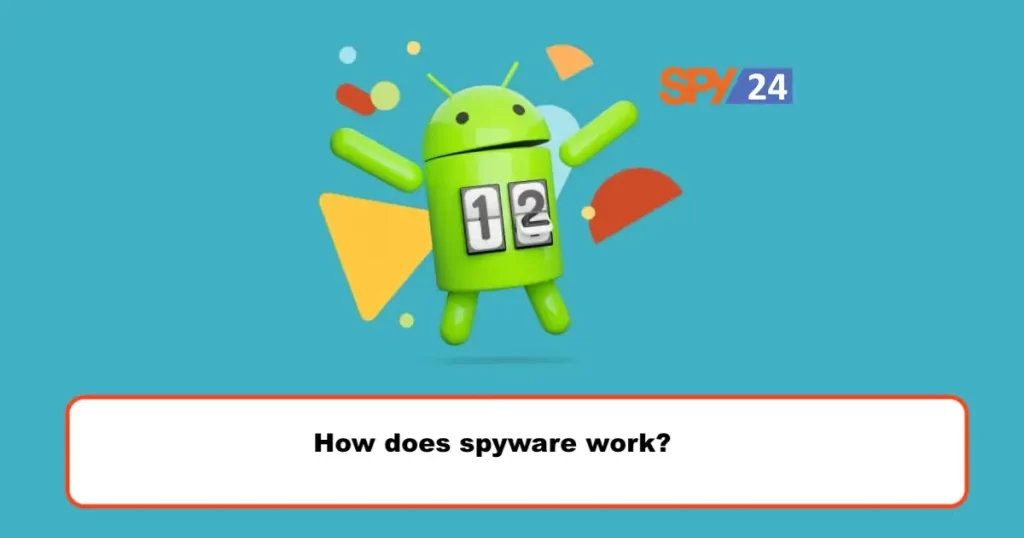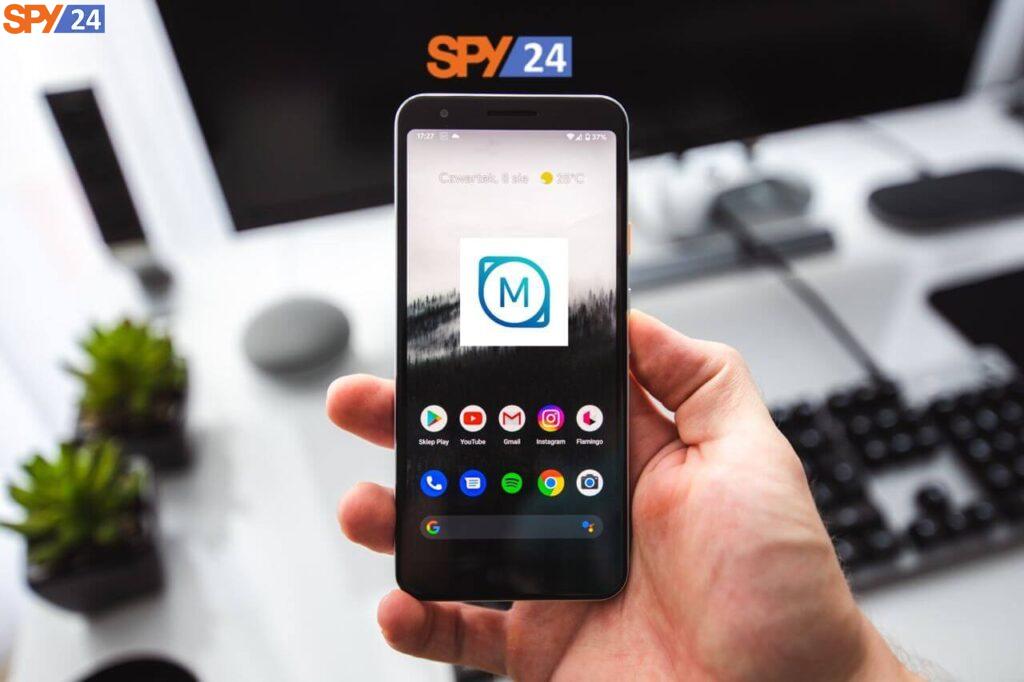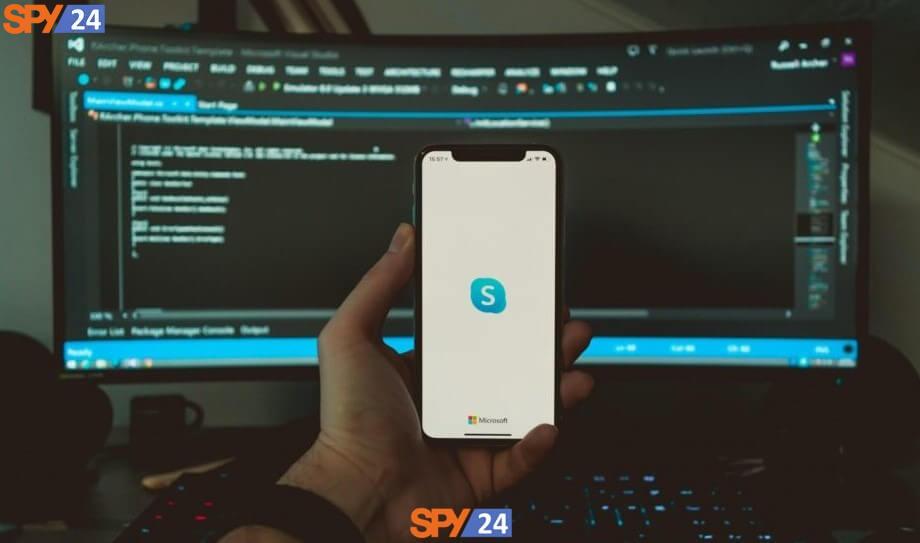What Are Some Creative File Names for an Android Spy App
Has your Android phone been acting a little weird recently? If so, the issue may not be an outdated operating system or worn-out device, but rather hidden spyware–a malicious program that can harm performance and pose a danger to your privacy. Short for spy software, spyware installed on your Android device is outlined to track any number of activities on your phone.
Easy to install but frequently difficult to eliminate, spyware can provide any number of third parties extensive access to who you’re and what you are doing on your phone.
And since we put so much of our lives on those Android gadgets, phone spyware may be exposing anything from your online passwords to banking data to hackers, scammers, and various others.
This without a doubt puts your privacy, security, and identity at hazard each day it remains on your device.
So, how do you know in case spyware programs are on your phone? And, is there any way to discover and erase them before it’s too late?
Here, we see signs Spyware may be on your phone, creative file names for an Android spy app to observe, and steps you’ll be able to take to remove spyware and secure your personal information from attack.
What are a few creative file names for an Android spy app?
As you ought to know by now, these programs have numerous diverse sorts, each of which seeks particular goals. But in the end, they all point to spying on and taking personal data. A few of these programs spy on cell phone cameras and others attempt to spy on conversations and messages. Moreover, a few spyware can even gain data from social networks such as Instagram and Telegram. In the following, we are going to review the specifications of a few of the most creative file names for an Android spy app.

1. Spy Video Recorder:
A spy video recorder is one of the foremost common spy tools planned for covert imaging. The way this program works is simple, and its reason is to furtively film without anybody noticing.
Install this app on your mobile phone, and it works in places where no one ought to take note that you are taking pictures of them. This app can indeed begin without unlocking the phone.
2. Ino spy Spyware:
Ino spyware is one of the foremost capable spyware in the world. This program is capable of spy software that, unlike the previous program, is outlined to get data from others.
Using this program, you’ll be able to hack all messages, contacts, photographs, contacts, and data of another person’s social networks. The into spy program was outlined by Ino Spy Specification in 2014. It can give the user only the primary 48 hours of spying free of charge. After that, to utilize this program, you have got to pay the related costs.
The point that you ought to keep in mind when utilizing this spy program is that you ought to utilize a credit card to purchase this program, which has its hassles and extra costs.
3. HelloSpy spyware:
The hello spy program is nearly identical to the InoSpy program and has the same conditions for giving services. Utilizing this program, you’ll be able to hack into another person’s phone and get all the data related to his calls, messages, and photographs. This program is additionally free only for the starting test, and after that, you ought to pay an expense to proceed to work. If you are looking for spying apps free to download, then this tool is for you.
4. The iSpyoo program:
This program is one of the foremost progressed and proficient spy programs. With it, you’ll be able to control all the data on the phone, calls, messages and videos, programs, and applications installed on the mobile phone. This program can screen all your messages on the internet and non-cyberspace and messaging applications such as Instagram, Telegram, Facebook, Emo, WhatsApp, Twitter, YouTube, Messenger, etc.
5. IT System Daddy s Eye software:
This program (IT System Daddy s Eye) is for the most part utilized to screen, control and track all calls, conversations, videos, and messages and control and record other personal and private data on the mobile phone. In case you need to lock or unlock your phone, you’ll be able to do so utilizing the message sent to your phone or personal email. This program is simple, within the shortest time, and rapidly and consequently installed and launched. You’ll be able to hide the Hide Task List option from the task menu, manager, and tap on it.
6. Children Tracker program:
This program is planned exclusively for parents who are very sensitive and stressed about their children’s activities on the internet and in non-cyberspace. Utilizing this program, you’ll be able to access all the data accessible on the phone, calls, conversations, SMS records, installed programs, contact records, etc.
7. The Xnspy software:
The Xnspy is an Invisible following and control program for mobile phones and tablets remotely.
Some features of the Xnspy tracking program include:
- Calls, messages, correspondence with friends and contacts
- Social network connections such as Telegram, WhatsApp
- Instant location and day-by-day trails
- Programs and games utilized and how long they are used
8. Cell Tracker:
In case you need to monitor another phone, this app is one of the best. With this program, you’ll see the places you visited a few days ago on the map. Of course, the program does not utilize GPS. To discover where your kid or partner went during the day, all you have got to do is install the app on the other person’s phone, and once you meet each other, check the app to control where they went.
9. Ear Spy:
When you utilize this app, you’re listening to music, but the surrounding sounds amplify and are recorded by the phone’s microphone.
Ear spy also contains an effective equalizer that upgrades the hearing of surrounding sounds.
What is spyware?
Spyware is a harmful computer program — or malware — installed on a device without the end user’s information. It attacks the gadget, takes sensitive data and web utilization information, and transfers it to promoters, information firms, or external users.

Any computer program can be classified as spyware in case it is downloaded without the user’s consent. Spyware is questionable since, even when it is installed for moderately harmless reasons, it can damage the user’s security and has the potential to be abused.
How does spyware work?
Spyware can make its way onto a gadget without the user’s information through an app install package, file attachment, or noxious site. In its least harmful frame, spyware exists as an application that begins as soon as the gadget is turned on and proceeds to run within the background. Its presence will take irregular access memory and processor control and might produce boundless pop-up ads, effectively slowing down the internet browser until it gets to become unusable.
Spyware may also reset the browser’s homepage to open an advertisement each time or divert web looks and control the provided results, making the search engine futile. Moreover, spyware can change the computer’s dynamic interface libraries, which are utilized to connect to the web, resulting in network failures that can be difficult to interpret.
At its most harmful, spyware will track web browsing history, passwords, and other private data, such as e-mail addresses, credit card numbers, individual identification numbers, or banking records. All of this data can be accumulated and utilized for identity robbery or sold to third parties. Data can be collected utilizing keyloggers and screen captures.
Spyware can moreover secretly make changes to a device’s firewall settings, reconfiguring the security settings to permit even more malware. A few forms of spyware can even distinguish when the gadget is attempting to expel it from the Windows registry and will intercept all attempts to do so.
How can I tell if there is spyware on my Android phone?
There are numerous signs spyware apps may be contaminating your mobile device and putting your personal information at hazard. Whereas malicious records and hidden Android spy apps are stealthy and work generally under the radar, the indications may wave some considerable red banners, demonstrating it’s time to take action.

1. Unscheduled rebooting
For most mobile devices, phone reboots are automatic, pre-scheduled, and started due to standard system upgrades. Moreover, you’re generally made mindful of required reboots in advance.
However, random reboots and unscheduled restarts may be a sign that hidden spyware is working in the background.
2. Spikes in data usage
Unexpected spikes in data utilization may demonstrate the presence of third-party apps working secretly. Of course, information utilization increases don’t always mean you have got malevolent apps on your phone.
But when it shifts from the standard, it may be time to investigate.
3. Rapid loss of battery power
Hidden spyware and other monitoring programs can sometimes utilize a lot of battery, rapidly draining your device of power. If your Android phone begins losing control speedier than normal, you will be dealing with the Android spy app.
4. Hot phone temperature
Sudden or prolonged increases in phone temperature are regularly a sign of battery overuse and may show the presence of spyware. If your device loses power quicker than normal, it might be a sign of an Android spy app.
5. Random, unprompted behaviors
Are apps launching randomly on your Android phone? Being explored to websites or apps without your say-so? Any cell phone activities taking place without your consent may be a sign somebody has remote access to your device.
6. Slower functionality
Slower load times and slacking performance may be caused by different apps running at once. In case you’re encountering sudden plunges in speed, progressed spyware may be the reason.
7. Strange texts
Weird SMS and MMS messages are regularly an aftereffect of hidden spyware on Android devices. In case random messages containing enigmatic codes or images begin to appear, your private information may be beneath surveillance.
8. Weird noise during calls
Hearing abnormal noises or unordinary static during recent phone calls? Pondering why that new phone makes bizarre sounds?
Lousy reception may not be the issue. Strange noises may demonstrate that somebody is tapping your calls, a rare but not unheard-of result of spyware infection.
9. Lengthy shutdown times
Longer-than-normal shutdown times might indicate phone spyware, which regularly requires additional time to turn off.
Android spy app file names:

Well-known examples of Android spy app file names include the following:
- CoolWebSearch uses security vulnerabilities found in Web Explorer to require control, alter settings and send browsing information to spyware authors.
- DarkHotel is a targeted skewer phishing spyware that specifically assaults business hotel guests through the hotel’s Wi-Fi network.
- Emotet was one of the foremost predominant dangers in the 2010s. It acted as a Trojan that stole banking accreditations from its targets.
- Gator is commonly found in file-sharing programs. It screens a victim’s web browsing habits to show the client better-targeted ads.
- TIBS Dialer disconnects the user’s computer from nearby phone lines and interfaces it to a toll number planned for accessing pornographic websites.
- Zlob downloads itself onto a computer to record keystrokes and look at a user’s browsing history.
In expansion, Android spy apps empower diverse individuals to track the phone user’s activity. Whereas most of these tools were made with the expectation of letting parents screen their child’s phone utilization, their capacities have been abused. These apps act as mobile spyware and empower external users to get to the phone’s microphone and camera to see their environment, listen in on phone calls, and get to the phone’s GPS location, passwords, and mobile apps. A few well-known Android spy apps include Spyera, FlexiSPY, and TheOneSpy.
What You Need to Know About Android Spyware File Names
Due to malware and spyware attacks, privacy and security are at hazard within the online world of today. Worse, there are numerous ways for a spyware file to get on your device, remain hidden, and do its sneaky work. It keeps track of everything you are doing, takes your private data, and can even destroy your life. So, in case you need to ensure your security from the spyware, you ought to at least know their names so you’ll erase or avoid them instantly. This article is about to inform you about the most common spyware files, their function, and how to get rid of them.

List of Android Spyware Names
Hackers always make new spyware to invade devices and spy on users.
You ought to know the foremost creative file names for an Android spy app.
Hoverwatch, Qustodio, mSpy, Spy Video Recorder, Ino spy, and HelloSpy.
These are the foremost commonly utilized spyware files and apps by terrible actors. Important: Spyware can alter names and hide on phones. “System update,” “sync service,” and “update service” are common spyware names.
They record calls and screen browsing history in the background. They send phone information to the hacker’s server.
You may not be able to discover the foremost common Android spyware files with their unique names.
Why Does Installed Spyware Hide Its Real Name?
We’ll list the reasons spyware hides its real names after installation.
- Deceive
In case the target knows about common spyware files and apps, they will spot it instantly. After installation, the spyware changes its name to misdirect its victim.
- Avoid deleting
Targets who know what’s going on frequently erase files or apps with spyware-sounding names. Spyware renames itself “system update” so its target won’t evacuate it.
- Deceive Spyware Scanner
Essential spyware scanner apps check the phone for spyware files. They have a database of most spyware files and apps. Basic spyware scanners can’t coordinate the phone in case the spyware changes its name after installation. Smartphone users’ greatest risk is spyware. Hackers can screen your phone activity in case they install spyware. This can compromise your security, hack your online accounts, and cost you money.
It’s difficult to list all the ways spyware can hurt you. Spyware is demolishing people’s happy lives and turning them into nightmares.
Let’s look at spyware’s harm to your phone:
1. Track Your Type
Modern spyware tracks your phone typing with a keylogger. The hacker can discover your online account username and password, bank and credit card data, and even individual messages by looking at them. After that, the hacker can move your cash, utilize your credit card online, and take over your accounts.
2. Bypassing passwords
To save time, you will store your username and password in your browser. Spyware can take saved passwords.
Spyware can take system and network passwords. They can duplicate and send any phone report to the hacker’s server.
3. Name-stealing
Websites identify clients through cookies. Spyware can take these cookies, permitting programmers to utilize your accounts to take data and commit crimes.
4. Streaming
Spywares can control your phone’s camera. They can remotely actuate your cell phone camera to observe you live. Your improper recordings can be online anytime.
Those recordings may be on your social media accounts in case hackers have your passwords. After that, individuals are frequently extorted.
5. Communicate
Spyware can control your phone’s receiver and camera.
They can record everything you say on the phone and around it. You will uncover sensitive data that can destroy your life.
6. Locating
Spyware on your phone lets hackers track you. He can look at your history. Therefore, you can be watched in any personal situation.
7. View photos and videos
Hackers can scan your phone’s gallery with spyware. You know what happens when your private photographs and recordings are stolen.
Common Android spyware file names
Want to discover hidden spyware? Here are a few of the foremost common spyware file names to note and flag for removal from your cell phone.

1. Auto Forward
Auto Forward was planned to assist guardians to keep kids secure from online predators. Shockingly, its popularity and viability regularly make it a target for hackers looking to spy on you and (possibly) get to your sensitive data.
It can also be installed from a remote area, permitting buyers to download the app without physical access to the target device.
2. Spyzie
Spyzie is a feature-packed spy app for Android and one of the more sought-after spy devices on the market. Accessible for a month-to-month membership, Spyzie permits the buyer to track movements like browsing history and applications you use more often.
3. PhoneSpector
One of the more up-to-date hidden spyware devices out there, PhoneSpector utilizes the latest in technologies to empower phone spying. PhoneSpector comes with a variety of prevalent features, including tools for tracking GPS areas and recording keystrokes.
This hidden app works on both Android OS and iOS devices.
4. XNSPY
XNSPY empowers control of another gadget from remote areas, giving access to anything from phone calls, browser history, and SMS messages to mail and more.
This progressed Android spy app can also drag data from chats active on social media accounts, as well as track the user’s GPS area from any place. XNSPY works on any Android gadget with a 4.0 or higher operating system.
5. Highster Mobile
Once installed, Highster Mobile screens activities over iOS and Android cell phones. Highster is user-friendly and accessible to clients for a one-time fee.
6. SpyEra
SpyEra offers several features and whistles that make it an engaging choice for observing a child’s online security.
But it’s these various qualifications and user-friendly interface that will moreover make this spyware on Android systems a valuable tool for noxious actors.
SpyEra provides inaccessible control, spy camera functionality, and a host of other devices for remotely following activity.
7. FlexiSpy
Of all the hidden Android spy apps, FlexiSpy offers maybe a few of the leading choices for following phone calls and particular phone numbers. FlexiSpy is for 4.0.3 Android systems and higher.
Other noteworthy mentions when seeking to discover hidden spyware on your phone incorporate Spy Video Recorder, Spyine, Ino Spy, iSpyoo, Daddy’s Eye, HelloSpy, Cocospy, Spyier, Qustodio, and Hoverwatch.
Where’s my Android’s hidden spyware?
Now that you just know what Android spyware record names to search for, it’s time to find spyware hiding in your phone’s apps list.
To distinguish spyware on Android and flag it for removal:
- Go to the Settings page on your phone. You can launch this page by looking at your phone or finding the Gear icon, which is ordinarily on the homepage.
- Find and tap on the “Apps” option within the menu.
- Locate and choose the three vertical dots symbol within the upper right section.
- Depending on your phone model, tap “Show system processes” or “Show system apps.”
- Scroll through your apps carefully. Seek for the hidden apps and file names we distinguished prior, as well as any you don’t recognize.
- Check your downloads
- Android spy apps regularly hide among downloaded files on your device.
- If combing through your apps doesn’t show anything suspicious, you’ll need to check your downloads.
- Go to the “Files” icon on your device (usually a brown file folder).
- Click on your Downloads within the file manager.
- Search for any junk records or other files you don’t recognize or see suspicious.
- If you happen to find spyware amid your search, it’s time to start the removal process.
What is spyware and why is it a problem on Android devices?
Spyware comes in numerous forms — for example, conveyed as a Trojan within the form of a browser expansion or a mobile app that violates essential permissions or as malware through phishing attacks.
While the common thread between variations of spyware is the aim to take individual data from a device, the ultimate aim behind getting that data can shift incredibly. As such, a combination of security controls and client instruction, and mindfulness are key to avoiding spyware.
Everyone must understand that spyware browser expansions may show up legitimate but will track web activity and record user behavior to monetize that data, either by offering the information or serving advertisements against it. Keyloggers and data stealers, two other sorts of spyware, moreover infect computers to take the information.

Whereas these spyware variations are still common, nowadays, increasingly, spyware is found at the nexus of individual information and communication: smartphones.
Mobile spyware, depending on complexity, can record the same information found on traditional PCs but with the expansion of call logs, messages, and location information. More advanced, targeted spyware can get to a mobile device’s camera, microphone, or encrypted informing communication too. In all but the most extreme cases, the key to avoiding mobile spyware is being mindful of the consent asked by apps.
What are some common names of spyware programs that target Android users?
There is an unending list of spyware names since hackers are coming up with new spyware frequently to sneak into devices and spy on people’s activities.
Here is a list of a few common spyware file names you ought to be mindful of:
- SPY24
- XNSPY
- Cocospy
- FlexiSpy
- PhoneSpector
- Auto Forward
- Highster Mobile
- Daddy’s Eye
- iSpyoo
- Spyzie
- SpyEra
- Spyier
- Spyine
- Hoverwatch
- Qustodio
- mSpy
- Spy Video Recorder
- Ino spy
- and HelloSpy.
The list can go on and on, but these are the foremost common spyware files and apps that evil individuals frequently utilize to spy on target persons.
How can you protect yourself from spyware programs on your Android device?
Maintaining strict cybersecurity practices is the perfect way to avoid spyware. Some best practices incorporate the following:
- only downloading computer programs from trusted sources;
- reading all revelations when installing software;
- avoiding interactions with pop-up ads;
- staying current with upgrades and patches for browser, operating system (OS), and application software;
- not opening e-mail attachments or clicking on links from unknown sources;
- using only trusted antivirus programs and legitimate spyware tools
- enabling two-factor authentication (2FA) whenever possible.
- Employing a pop-up blocker or advertisement blocker also helps avoid spyware. Mozilla Firefox and Google Chrome have built-in pop-up blockers, and advertisement blockers can be added as a browser extensions.
- Mobile users ought to avoid downloading applications from outside their app stores and avoid jailbreaking their phones, in case conceivable. Since both make it easier for spyware to infect mobile devices.
- iPhone users can empower 2FA at no charge to ensure all the information on their smartphones and prevent mobile spyware attacks. 2FA can be utilized in a variety of other common services, counting PayPal, Google, Dropbox, and Microsoft 365, as well as in social networking sites, such as Instagram, Snapchat, Facebook, and Twitter. Most major banks have moreover begun implementing 2FA in their websites and mobile apps. A few services have even expanded their verification procedure to three-factor and four-factor authentication.
What should you do if you think you have already been infected by a spyware program on your Android device?
Spyware programs must be erased as soon as they are noticed.
To remove spyware, device owners must first recognize that the spyware exists in their system. There are a few indications to search for that can imply the presence of an attack. Indicators incorporate the following:
- The device runs slower than normal.
- The device reliably crashes.
- Pop-up advertisements show up whether the user is online or offline.
- The device begins running out of hard drive (HD) space.
If users decide that spyware has infected the system, they ought to perform the following steps:
- Disconnect the web connection.
- Check the device’s programs list to see in case the undesirable program is listed. In case it is, select to remove it from the device. After uninstalling the program, reboot the whole system.
- If the above step does not work, run a scan of the system using a legitimate antivirus computer program. The filter ought to discover suspicious programs and inquire the user to either clean, isolate or erase the software.
- The user can moreover download a virus removal tool or antispyware tool and permit it to run through the system.
- If none of the oversteps work, at that point the user will have to access the device’s HD in safe mode. In any case, this requires a tool that empowers the user to get to the spyware folders and physically erase them. While this sounds complicated, the method should only take a couple of minutes.
Spyware on mobile devices can also be checked for utilizing security programs. Mobile device owners can moreover back their information up and then reset the device to its factory settings.
Antispyware tools
Some antispyware tools only perform when the check is physically begun, whereas others are continuously running and observing computer action to guarantee spyware cannot record the user’s data. Users ought to be cautious when downloading antispyware tools and only download devices from trustworthy sources. Product surveys can offer assistance to users decide which devices are safest.
Some antispyware tools incorporate the following:
- Malwarebytes
Malwarebytes is an antimalware and spyware tool that can expel spyware from Windows, macOS, Chrome OS, Android, and iOS. Malwarebytes can check through registry files, running programs, HDs, and individual files. Once a spyware program is identified, a user can isolate and erase it. In any case, users cannot set up automatic filtering schedules.
- Trend Micro HouseCall
Trend Micro HouseCall is another antispyware tool that does not require user installation, so it utilizes a minimal processor and memory resources, and disk space. However, like Malwarebytes, users cannot set automatic scans.
- Windows Defender
Windows Defender is a Microsoft antimalware item that is included within the Windows 10 OS under Windows Defender Security Center. The program is a lightweight antimalware tool that secures against dangers such as spyware, adware, and infections. Windows Defender incorporates features such as security against phishing sites, real-time danger detection, and parental controls. Windows Defender users can set automatic fast and full scans, as well as set alarms for low, medium, high, and serious need items.
Conclusion
Knowing how to recognize and expel malicious spyware can assist secure your phone and your information. Once gone, hackers and thieves on the other end of that computer program can no longer utilize that app to track and steal your vital information.
And to attain an indeed higher level of security, consider removing your name and individual information from the web.
Deleting your information from data brokers and background check sites ensures your address, phone number and your data no longer show up in Google searches, permitting you to ensure your information from criminals and others online.
With the proper personal data removal solution, you’ll right away remove your sensitive information from data collectors and search motors all through the web, making it even harder for criminals to discover and utilize your information against you.
FAQs
1. What are the names of spyware for Android?
Be Aware of Android Spy App File Names:
- SPY24.
- XNSPY.
- FlexiSPY.
- SpyBubble.
- Hoverwatch.
- eyeZy.
- Umobix.
2. What do spyware apps look like on Android?
You’ll see a small teardrop symbol in your phone’s notification bar when an app is using your device location. If you see this appear when you’re not using apps allowed to access location data, this could indicate spyware is running and tracking your location.
3. How can I tell if my phone has a spy app on it?
How to Check for Installed Spyware on Phones:
- Go to Settings.
- Tap on Biometrics and security.
- Tap Install unknown apps.
- Check if any toggle switch button is enabled.
4. What are the 4 types of spyware?
Spyware is mostly classified into four types: adware, system monitors, tracking including web tracking, and trojans; examples of other notorious types include digital rights management capabilities that “phone home”, keyloggers, rootkits, and web beacons.
5. How do I find hidden apps?
Find Hidden Apps in App Drawer Folders.
It’s the scrollable display of apps that you get when you swipe up on your phone’s home screen or tap the app drawer icon at the bottom. From here, you can hide and unhide apps on some Android systems via the menu button—it usually looks like three dots or a gear icon.
SPY24 Install application free The Most Powerful Hidden Spying App to Monitor Android, IOS Cell Phone & Tablet Device Remotely. Best Android Parental Control App for Kids & Teens Online Safety.
Now take the liberty to monitor Android, and IOS devices with exclusive features better than ever before Monitor all Voice & Text Messages Communication records, Listen to & Watch Surroundings in Real-time Unleash Digital Parenting with Android, IOS Spy App Spy (Surround Listing & Front/Back Camera Bugging) IM’s VoIP call recording on Android OS 13 & above With 250+ Surveillance Tools at your fingertips using Android Tracking & Parental Monitoring Software.



